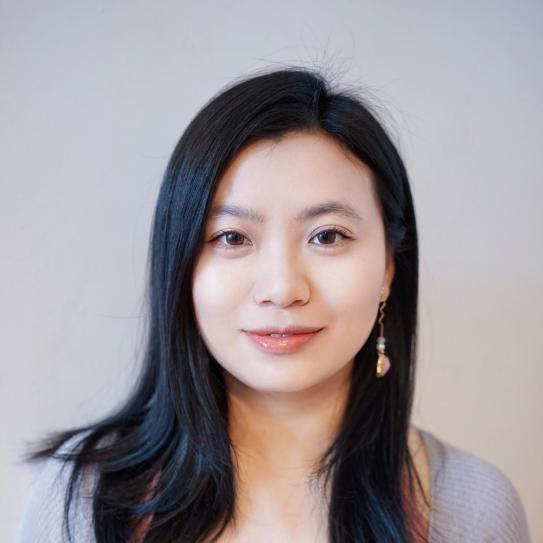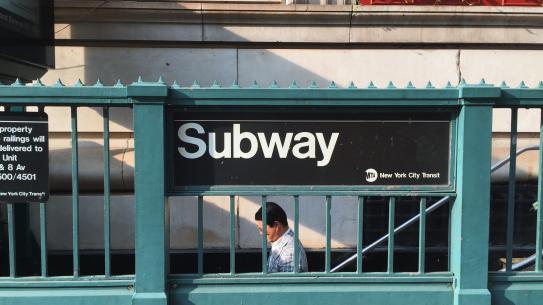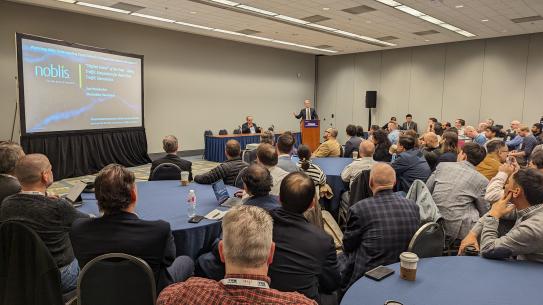
Jingqin Gao hoped she might rest for at least a couple of weeks after earning her doctoral degree in transportation planning and engineering. It had been a busy and eventful few years for her, including presiding over Tandon’s student chapters of the Institute of Transportation Engineers (ITE) and Intelligent Transportation Society (ITS), hosting the ITE Northeastern District’s annual Collegiate Traffic Bowl Competition and mentorship lunch, organizing panel discussions for women in transportation, helping oversee TransportationCamp (a popular event drawing hundreds of students and professionals each year), serving as a teaching assistant, and conducting research related to traffic simulation modeling, big data and machine learning approaches for transportation, connected and autonomous vehicles, congestion management, transportation economics, and parking management.
There were many rewards along the way: under Gao’s leadership, Tandon’s ITE chapter was named the best in the region, and she received the Dr. Louis J. Pignataro Memorial Transportation Education Award and the Women’s Transportation Seminar (WTS) National Leadership Legacy Award. Still, it had been a demanding endeavor, and she looked forward to some well-deserved relaxation before diving back into work.
At C2SMART (Connected Cities with Smart Transportation), Tandon’s Tier 1 USDOT University Transportation Center, they had a different idea: immediately after defending her dissertation in late February, Gao was tapped to start work as a C2SMART Postdoctoral Associate, taking the lead on planning and developing data-driven transportation solutions and techniques within the framework of multiple research programs and projects.
Luckily, she’s adept at multitasking. Her current job involves studying the impacts of COVID-19 on transportation systems, quantifying the effects of double parking, helping New York City’s Department of Transportation pilot a program to assist visually impaired pedestrians, improving bus traffic in the Lincoln Tunnel, and much more.
Gao — who earned her master’s degree at Tandon in 2012 — worked as a traffic engineer and onsite NYCDOT consultant before deciding to return to her alma mater for a Ph.D. in 2015. She has co-authored several papers with C2SMART’s director, Kaan Ozbay, whom she considers an important mentor, and welcomes the chance to continue working alongside him. As a woman, she also welcomes the chance to mentor other women at Tandon and encourage them to enter a field that has been exceedingly fulfilling for her. “I’ve done internships where I’ve been the only woman in the room, so it’s great to be a part of C2SMART, which is working to change that paradigm, just as it’s working to create the transportation solutions the world needs,” she says.
Research News
Mobility in post-pandemic economic reopening under social distancing guidelines: Congestion, emissions, and contact exposure in public transit
The COVID-19 pandemic has raised new challenges for urban transportation — “back to the office” policies, staggered teleworking hours, and social distancing requirements on public transit may exacerbate traffic congestion and emissions due to shifts in travel modes and behaviors.
A team consisting of C2SMART members Ding Wang, Yueshuai Brian He, Jingqin Gao, Joseph Chow, Kaan Ozbay, and researchers from Cornell University, proposed a simulation tool for evaluating trade-offs between traffic congestion, emissions, and COVID-19 spread mitigation policies which impact travel behavior. Their research has been published in the November 2021 volume of the Transportation Research Part A journal.
Using New York City as a case study, the team used open-source agent-based simulation models to evaluate transportation system usage. Additionally, a Post Processing Software for Air Quality (PPS-AQ) estimation was used to evaluate air quality impacts associated with pandemic-related transportation changes.
The research also estimated system-wide contact exposure, finding that the social distancing requirement on public transit to be effective in reducing exposure but having negative impacts on congestion and emission within Manhattan and in neighborhoods at transit and commercial hubs.
The proposed integrated traffic simulation models and air quality estimation models may have the potential to help policymakers evaluate the impact of policies on traffic congestion and emissions and also to help identify transportation “hot spots,” both temporally and spatially.
The research was conducted with the support of the C2SMART University Transportation Center, and funded in part by the 55606–08-28 UTRC-September 11th grant as well as a grant from the U.S. Department of Transportation’s University Transportation Centers Program.



